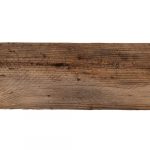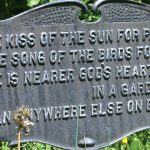
Or, what I did on my summer vacation
By Jan Leitschuh
It was raining — again. Cold, slushy, May rain, at 6,500 feet.
On my third day of work, as a 65-year-old wrangler on a guest ranch near Yellowstone National Park, my Western saddle suddenly shot forward onto the neck of my startled mount. I was pointed downhill on the slickest, steepest, narrowest slope of the morning’s mountain trail.
Outwardly, I was cool, calling ahead for a halt to the line of guests. Inwardly, I was freaking — how to fix this heavy saddle quickly, with a gaggle of guests in an awkward, uncomfortable, downhill hold?
As I sit homebound in these viral times, I find myself mind-traveling back to my Montana “summer vacation” last year. I had been, by far, the oldest wrangler in a young person’s job. My colleagues were in their early 20s, and I was older than their grannies. My immediate boss was 34 years my junior.
So I needed “street cred,” as it were. I was out of practice. And now I was stuck on a steep, muddy goat track, on an unhappy horse deciding if bucking down the mountain through the guests would solve his saddle problem.
Mid-May in the high country of southern Montana can be a snowy, rainy, muddy mess.
I was bringing up the rear on a lope (Western canter) ride, an option for the more experienced guests. It was so slippery we never chanced the faster gait, just walked and trotted to keep guests safe. The cold, gray clouds tossed some wet snow into the rainy mix. I was riding Sebastian, a nice, sturdy bay gelding with a massive, round barrel. Though I had cinched him up as much as I humanely could, the saddle and pad still let loose on the steepest downhill. When I called downslope to the lead wrangler to halt our ride for a moment, he was so far below, it was a miracle he heard.
How was I going to fix this? With a wall of Douglas fir rising on the right, I slid off the downhill, left side. When my boots hit the greasy clay, they shot out from under me, and I nearly slipped under my mount. Now my hefty horse really towered above me, with his hindquarters even higher uphill. I had to set the heavy saddle backward. Reaching up to reposition an awkward, 40-pound stock saddle loaded with safety gear, with frozen fingers, on an anxious horse pointed downhill, while balancing on two greasy, mud-slicked rocks in the chilly rain, while guests waited in a precarious position of their own, was not the greatest of my challenges in the moment.
I still had to remount.
With a long cowboy slicker and multiple layers of warm clothing hindering flexibility, downhill of a tall, skittish horse, with pounds of slippery clay bricked on my boots and no solid footing, I knew I would have to give it my all to regain the saddle. Over the summer the demands of the job would harden my aging muscles to wrangling tasks — but I was not quite there yet.
Calling on all my reserves, I sprang up off the greasy rocks. My pride, guest safety and new job were at stake. Just as my brain was registering that I was about to fail to haul my aging, clay-heavy, clothing-burdened carcass aboard, I let out a desperate roar of effort and just managed to regain the saddle, feeling an electric “sproing” in my left ribs that left me breathless and panting.
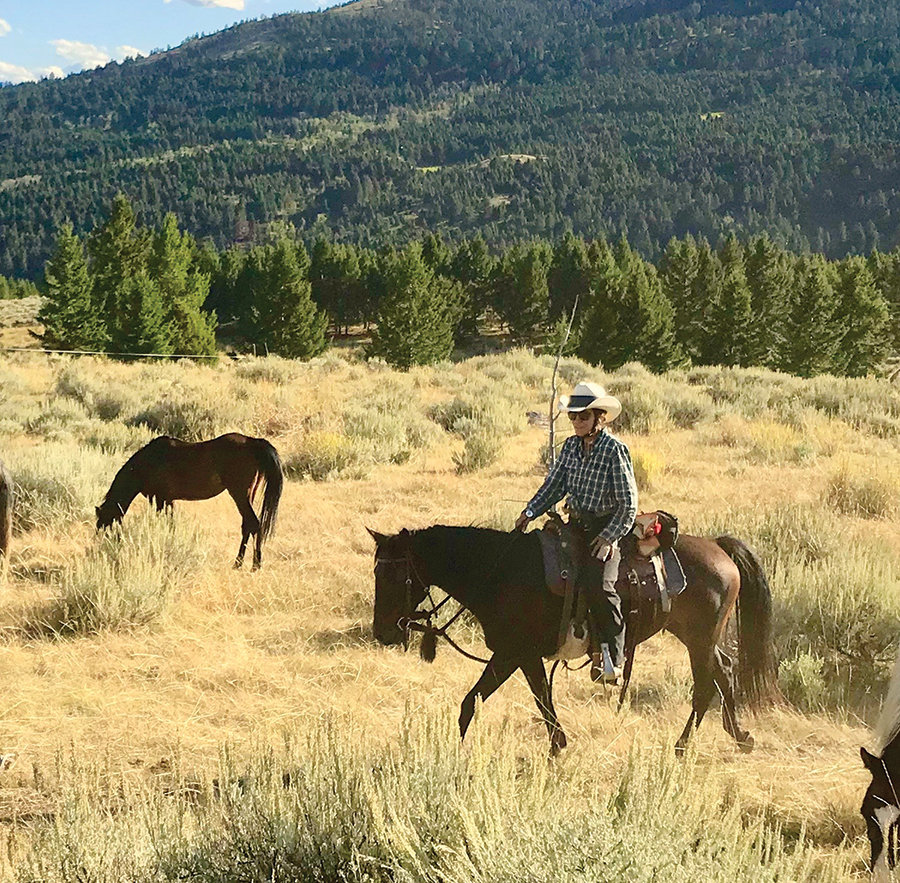
“OK!” I called forward, panting, and the ride started back up. I hoped my hasty saddle reset would last to the bottom of the mountain. I was wet, muddy, used up, hurting and mildly terrified.
At 65, I was the only “wrangler on Medicare” among youth. And I was beginning to see why it was a young person’s job. I thought, “What am I doing here?”
The next day, I broke my foot.
Thus began one of the best summers of my life.
No stranger to horses, I’d been an equine professional most of my life as a teacher, trainer, competitor, clinician, breeder, whipper-in and national dressage judge. I dove deeply into Western horsemanship as well, traveling to California to spend a remarkable winter with a life-changing teacher, the late Tom Dorrance. Yet as I tried to take care of my aging parents through six years of various health crises, while still keeping up my business, I found myself running out of gas and enthusiasm. The joy that had propelled me deeply into horses was gone. I was cooked.
A month after my mother died, I was burning out fast. I’d picked up a book about a woman who hiked the entire Appalachian Trail solo, and electricity shot through me as I read. I dreamed about the AT. The very concept lit a fire under me — Walking! Freedom! The idea hearkened back to my earliest draw to horses: mobility, a means of going places. After a two-year planning process, I sold my show horse, breeding stallion and broodmare, the majority of my horse gear, abandoned my beloved horse country lease, and pared my belongings down to a small storage locker.
And then I walked away. Literally. On the Appalachian Trail, from Georgia to Maine.
When I returned six months later, I honored the clinic commitments I had left stacked up around the country. But when I walked out of the arenas, I knew this chapter of my life was over. My horse interest, the most powerful driver in my life since before I could talk, was absent.
Imagine my surprise when, 15 years later, it came roaring back.
First, Denise, a trainer in Illinois and an old friend, asked me if I would return for a clinic. When I protested that I hadn’t ridden in years, she basically told me they didn’t want my butt, they wanted my eyeballs. I’d always believed in walking the talk. So I phoned up some old students and asked if I could watch them work, and offer what I could, to see if I could still be useful. Turns out it was like riding a bike.
Then, when I found myself retired but in need of some part-time employment, I looked at seasonal jobs and stumbled across “wrangler.”
Wrangler! I could do that! I had done it as a college student, traveling to Colorado for a fabulous, Rocky Mountain summer of trail rides and teaching. Returning to the Rockies would be a dream.
Local support bloomed. With my husband’s blessing, I blasted out applications, résumés and riding videos. Artist/rider Beth Roy loaned me an old campaigner to use in a wrangler video to display the needed skills to employers. Local trainer Kris Hamilton offered me long use of an old Western saddle. To get legged up, another friend, Cricket Gentry, found me a spare horse to ride. One windy day, the mare snapped out a sharp 180 and nearly spun me off — nearly, but didn’t — and as I sat up Cricket shouted, “You still got it!”
Maybe, just maybe, at 65, I still did.
I’d sent out a score of inquiries, but only two guest ranches topped my list. Radio silence. Was I too old?
Two weeks before I would need to leave, I got three offers — and the last one was my top pick. I was ecstatic, wild with joy, even. I was headed to Mountain Sky Guest Ranch, a 19,000-acre luxury dude ranch near Emigrant, Montana, with food, housing and use of the fine facilities included. My new bosses had taken a chance on a 65-year-old. My ranch had fielded over 400 applications for 15 positions. I was truly grateful, and privately vowed to be an asset in every way I could.
The early days were overwhelming.
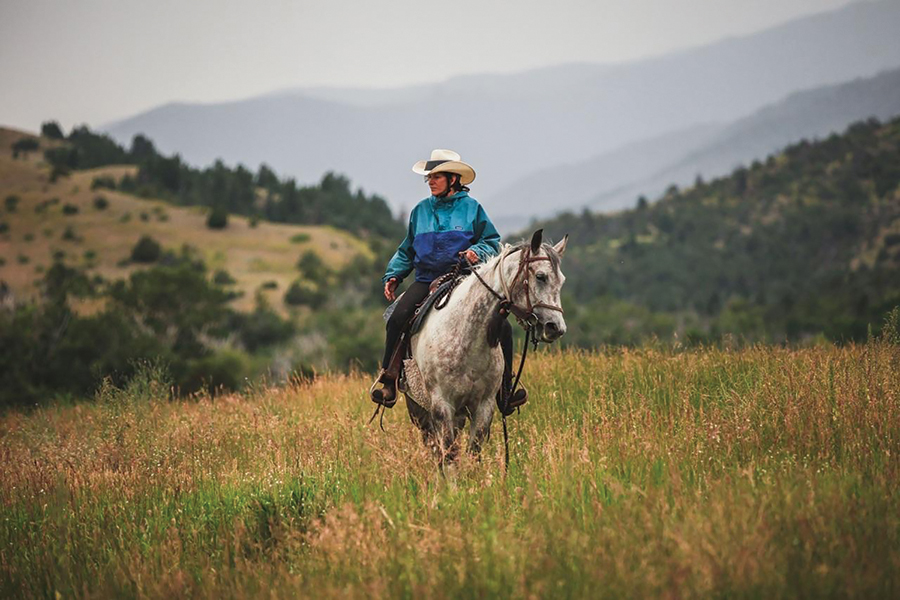
Besides dealing with a broken foot, I had to memorize the herd of 150 horses — their names, habits, health, quirks and traits. There were ranch protocol, safety and first aid classes to master. Multiple trails and local geography had to be learned. Disconcertingly, I was finding my brain wasn’t as nimble as it had been when last I’d wrangled — in college. My young colleagues, unsurprisingly, socialized and shared information mostly among themselves. The work was deeply physical, with us on our feet or in the saddle for 12 hours a day, at times. Rotating staff brought the entire herd of horses down the mountain before daylight each morning, and returned them in the evening.
A young wrangler, Cody, kindly crafted me an iron plate fitted to the bottom of my cowboy boot. If I duct-taped it on every morning, it stiffened the boot sole enough that I could continue to work with the broken metatarsal.
But the “Iron Maiden,” as I called it, was heavy, and my foot ached. I missed my husband. The steep trails were mildly terrifying but I’d wrangled in the Rockies — what was I expecting? There were large critters out there that could eat you. Some days I was too tired to eat, just took a shower and collapsed in my room. So much information to master! I was having trouble sorting out the many trails. My sacroiliac joint sprained itself from limping, and that pelvic glitch was a bigger hindrance than the foot, making lifting heavy items (like saddles) excruciating. The rest of May and most of June, I was in fairly grinding pain, frustrated, tired, hobbling behind my colleagues. My bosses made concessions, and I chafed at my limitations.
But the sun came out in June. I learned the horses and the trails. I genuinely enjoyed the guests, especially coaching them to better horsemanship. Best of all, my deep and primal love of horses came roaring back.
Wranglers are assigned newer horses to bring into ranch routines. My wrangle pony, “Honor,” a funny little Wyoming mustang, utterly stole my heart. Dark bay, almost black, this opinionated little girl could turn on a dime, usually in a whirling spook, but lots of groundwork and attention created a bond between us. She made me laugh. By July, I could call her name across the crowded corral and she would call back, trotting through the mud to find me.
“Homer” was another horse I was asked to ride. An affable bay roan gelding, he’d started an unsettling habit of trotting down hills. Sometimes he would even cut a switchback and plunge down the short cut, disconcerting guests. I was asked to nip that in the bud. Soon I became deeply fond of him as well, and often chose Homer to help flag the other horses when bringing up the herd. He was comfortable, honest and came around swiftly — and even saved my neck one early June morning.
For my first morning “gather,” I was to round up the herd on the mountaintop with another, more experienced colleague. I caught Homer, tacked him, and we set off into the cold dark at a fast clip. New growth sage perfumed the damp, stony mountain, and sometimes sparks flared from our mounts’ steel shoes. It was 4:30 a.m., pitch black, and I soon discovered my tiny backpacking headlamp was useless. I could follow the faint glint of the barbed wire fence, but basically I was gathering blind, trusting Homer to avoid stepping in a badger hole or tripping headlong over a sage bush. I didn’t yet know what I was doing, and it was terrifying. Every brushy crash, in my mind, was a mama grizzly or a mountain lion, neither of which was rare in our world. After an hour, we had somehow gathered the herd at the gate, ready for the long push down from the mountaintop to the ranch. My colleague felt that since it was still early in the season, someone — me — needed to lead the horses to make critical turns and twists. The other would stay on the mountain, waiting for the final corral count to be radioed back, then round up any stragglers.
The first task was to get 100-plus horses down the stony switchback, “Yellow Brick Road,” as we called the quick descent. In several places, the road edge dropped off.
“Get in front of them,” my colleague instructed.
“You mean trot downhill?” I asked. I was quietly agog. I couldn’t see a darn thing. The descent was slippery, steep and rocky. And Homer wasn’t supposed to even trot downhill.
“Go as fast as you have to, to stay in front of them,” he answered. Gulp. OK . . .
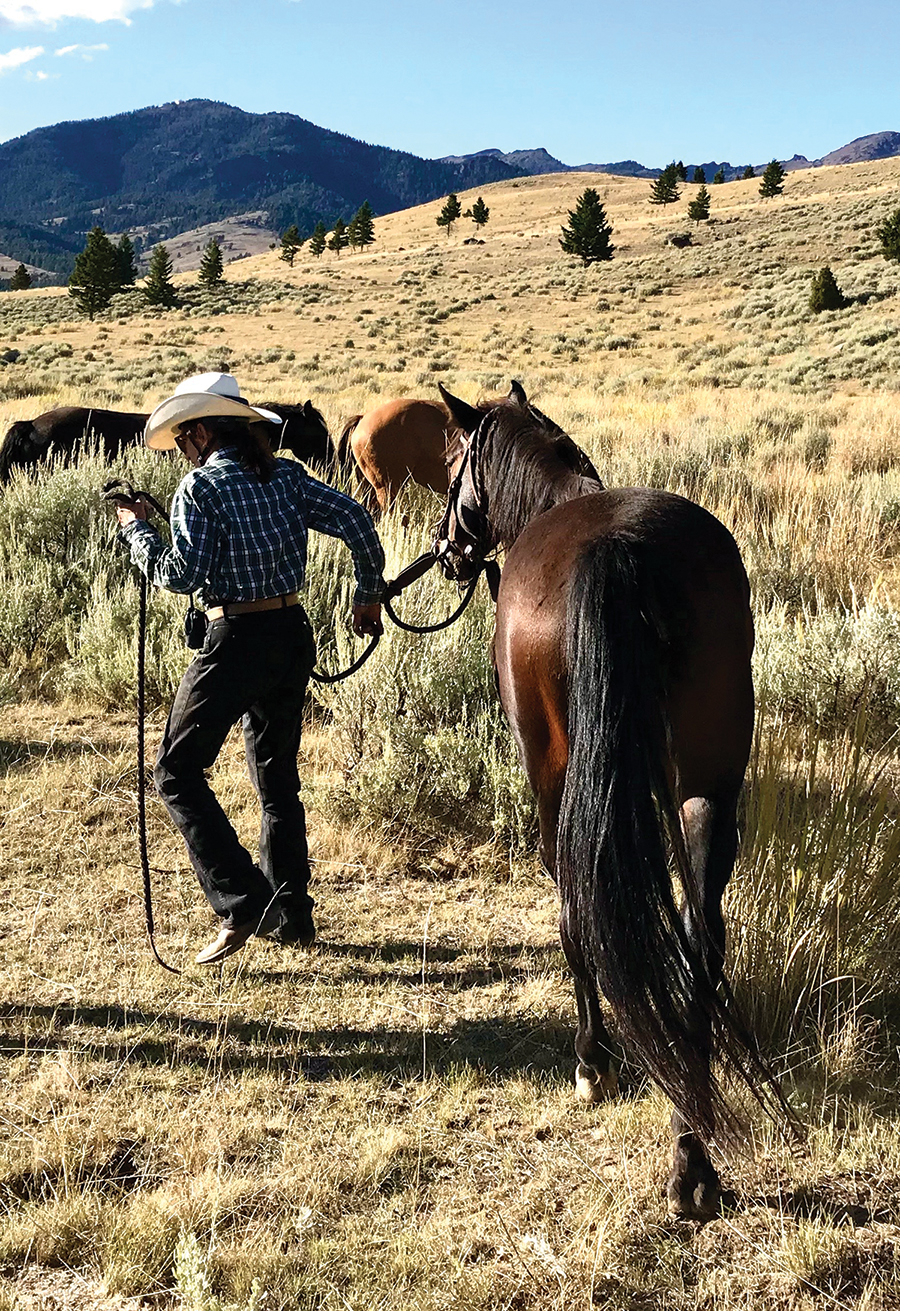
“GO!” he urged as he opened the gate. The restless herd churned down the mountain.
We went. Since I couldn’t see, all I could do was hope Homer could. Shut your eyes tight — that’s what I saw for 10 long minutes. On horseback. Downhill. With 100 loose horses hurrying behind me.
I held firm to the saddle horn in case Homer chose to deploy his switchback shortcut move — I didn’t want my horse to disappear from beneath me, leaving me hanging in mid-air like Wile E. Coyote before the inevitable crash. Back and forth we swayed in the dark, fast — too fast — taking the switchbacks, the herd pounding behind us, the edges unseen. It was a total trusting in fate and Homer — and both delivered.
After an eternity, I heard the creek roaring at the bottom of the mountain. We thundered across the wooden bridge, swung a hard left, skirted the leg-swallowing cattle guard across the road, crossed another bridge and turned a hard right up the next slope toward the ranch a half-mile away as the darkness finally yielded to faint shapes. All before coffee.
Every horse was accounted for that morning. Homer got a rubdown, an extra measure of grain, and my complete, grateful loyalty. He was solid. I made a point to look out for him in the herd. One large turn deserves another.
As summer routines settled in, parts healed. The sun-washed days warmed up and grew longer, the scenery was unparalleled, the guests interesting and often international, the four-star food was delicious. I rode other horses — the fine red mare Flower, the gaited pinto Archie, the large grey Badger, the lazy, good-natured Teddy, the grullo Mouse. I respected the horsemanship of my supervisors, and the programs they created to keep guests both safe and entertained.
Breakfast rides, dinner rides, team penning, moving cattle. I grew stronger, slimmed down, came to relish the steepest trails. I found a tribe with some of the older staff in dining, housekeeping, the wellness spa, veterinary. I met some fears, limiting beliefs about aging, barriers, and plowed forward. Late afternoons driving the herd back up the mountain became a favorite activity.
I did see grizzlies, eventually. Also moose, pronghorns, mule deer, fox, marten, airborne cranes and elk. Wildflowers galore, from pink shooting stars, arrowleaf balsamroot, Indian paintbrush to wild roses and postcard fields of purple lupine. Hiking was sublime, even if you did need to carry bear spray. I burned up my senior parks pass on days off visiting Yellowstone, viewing bison, wolves, hot springs, fumaroles, sulfurous mud pots, geysers and more.
Some of the wranglers returned to school in August, but my commitment was through the first week of October. It was a long time to be gone from home. We had cold and snow that last week. Montana was making it easier to say goodbye.
At a last meal in staff dining before I left, the head wrangler, Adam, our main boss, took a seat across from me. “You were as advertised,” he said with a smile. “You just never quit.”
I went to hug Julie, Adam’s assistant and my immediate supervisor. She pulled me to the side. “We got the most effusive praise from guests about you,” said Julie. “Strong finish. Your hard work was appreciated. You are welcome to return.”
When I got home last fall, old friend Trish Greenleaf immediately installed me on one of her horses. We trail ride often. I was back riding and requests for instruction and even colt starting began coming in again. The little work I accept has a richer, different flavor now that I’m retired. I’m gratified (and mystified) that this old passion has re-emerged in my life.
Meanwhile, at ranch elevation, the patchy snow has mostly melted off Emigrant Peak, and the wild raspberries are sweetening. Wild roses perfume the trails. The moose and elk and cattle calved and moved to higher ground, the bears roam, looking for a meal. The ranch herd will have shed their winter coats and sleeked up. This year, the ranch chose to close until at least early August.
I think of Honor and Homer and Flower and friends, and suddenly, it’s not COVID-19 cabin fever I’m feeling. It’s Rocky Mountain fever. PS
Jan Leitschuh is a frequent contributor to PineStraw magazine.

